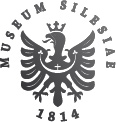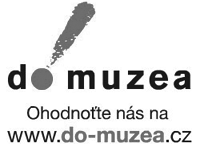ČASOPIS SZM SÉRIE B – VĚDY HISTORICKÉ
LXVIII/3/2019
Lukáš TUROŇ: Sňatečnost obyvatelstva Jablunkovska v „dlouhém" 19. století I. / Nuptiality of the population of the region of Jablunkov in the „long" 19th century
(s. 209–230)
Abstract
The main objective of this study is a description of nuptiality of the population of the region of Jablunkov during the Industrial Revolution. The work presents the development of nuptiality between 1791 and 1910. This study is based on historical demographic research on nuptiality grounded on statistical processing of church marriage registers. When working with the registers, excerption method was used, which consists of rewriting the individual entries into the pre-printed sheets as they follow in the register, wherein a new sheet is created for each year. By using the agreed signs and abbreviations, a duplicate of the register is then created, which is, however, clear and free of all redundancies. An aggregate method was also used to collect monthly or annual totals of marriages, births and deaths, and these data are monitored in long time series. This allows large population groups to be processed for very long periods of time. It is possible to detect deviations in the number of phenomena observed, to classify the totals by age or, in case of knowledge of the population of the area surveyed, also to evaluate gross rates of marriages, births and mortality. Using this method, we can get a basic idea of population development of a particular area. The region of Jablunkov was located in a region where agriculture played a substantial economic role throughout the 19th century, and, from the second half of the 19th century, heavy industry began to gradually develop, led by Třinecké Železárny (ironworks), the Košice-Bohumín Railway and the more distant Ostrava-Karviná Coal Mining District and the Vítkovice Ironworks. This economic situation also affected the livelihood and living standard of the region of Jablunkov population especially from the turn of the 19th and 20th centuries; they were just the effects of economic booms or crises, along with war conflicts or epidemics, that had a major impact on the development of nuptiality.
Keywords: historical demography, gross rate, register, nuptiality, population, the region of Jablunkov, 1791–1910, the "long" 19th century.
Marta ŠOPÁKOVÁ: Lidé a politika: Srpen 1968 a následky posrpnového vývoje v podniku Státní lesy (Severomoravské státní lesy) v Krnově I. / People and Politics: August 1968 and the consequences of the post-August development in the company Státní lesy (state forests) in Krnov (North-Moravian state forests)
(s. 231–245)
Abstrakt
The first part of the study, which describes the situation in the company Státní lesy (state forests) in Krnov (North-Moravian state forests) in the period from 1967 to 1970, deals especially with the consequences of the political events of August 1968 on the operation of the company and the fate of its employees. The starting point is the situation in the period from 1967 to 1968, which was characterized by openness and criticality; the study concludes with the beginnings of the normalization process at the turn of 1968 and 1969.
Keywords: North Moravian Region, Silesia, Moravia, Krnov, Státní lesy (state forests) in Krnov, North Moravian
State Forests, 1968, August 1968, Skills Competition - Silver Saw, Forestry and hunting days in Rýmařov, normalization
Proces
Sabina SOUŠKOVÁ – Pavel WAISSER: Archetypální vztahy umění a krajinotvorby v rámci konceptuálního myšlení období manýrismu, surrealismu a postmoderny: zamyšlení v převážně středoevropském diskurzu / Archetypal Relations of Art and Landscape Creation within the Conceptual Thinking of the Period of Mannerism, Surrealism and Postmodernism: Refl ection in the Mainly Central European Discoursey
(s. 246–268)
Abstract
The paper Art and Landscape Creation in the Conceptual Thinking of Mannerism and Surrealism: Reflection in the Predominantly Central European and Domestic Discourse monitors how the implementation of contemporary sculpture parks can be archetypally linked to the history of garden art. The paper discusses the chosen topic mainly in terms of ideas, in particular examples of implementation in the Czech Republic, Germany, Poland, Austria and Slovakia. The given internal context consists mainly in the transmission or postmodern interpretation of ideas that influence the current similarity and spatial organization of some sculpture parks and works of art with the gardens of the early modern period. In the theoretical analysis of these implementations, the surprise is often hidden in the confrontation of „old" and „new". The assimilating / flowing shapes and forms can then serve as one of the mirrors of today's liquid society, while the mirroring dimension is slowly flattened in the mobile phone displays on a selfie stick...
Keywords: Sculpture park, Mannerism, Surrealism, labyrinth, heterotopia, contemporary art
Martin POLÁŠEK – Miloš ZAPLETAL: Základní východiska metodiky monitorování vlivu látek znečišťujících ovzduší na sbírkové předměty uložené v pevnostních objektech z 2. světové války / Basic starting points of the methodology for monitoring the infl uence of air pollutants on collection objects deposited in fortifi ed premises from World war II
(s. 269–279)
Abstract
The study presents the basic methodology of research into the influence of the internal environment in concrete fortress premises on museum collection objects deposited there. Attention is paid mainly to concentrations of air pollutants from the outdoor environment, which has a degrading effect on the collection items. The effects of individual air pollutants on the collection items deposited in the fortified premises from World War II are also presented. The research was carried out within the buildings of The Hlučín-Darkovičky Czechoslovak Fortification Complex.
Keywords: World War II military objects care – museum items – ventilation – preventive conservation – depository – museum collections
MATERIÁLIE/MATERIALS
Ondřej KOLÁŘ: Východní fronta Velké války očima záložního důstojníka. Válečná korespondence Ing. Emila Rybáře
(s. 280–293)
JUBILEA/ANNIVERSARY
(s. 294–299)
„Toť tedy cestovní mé museum." Jan Havelka (1839–1886) a jeho Cesta na Praděd (Pavel Šopák), 50 let od úmrtí Lumíra Jisla (Jiří Juchelka).
RECENZE/REVIEWS
(s. 300–301)
Martin SLEPIČKA, Hrabová v čase první světové války a formování samostatného Československa 1914–1919 (Antonín Barchuch)
KRONIKA/CHRONICLE
(s. 302–305)
Digitalizace v paměťových institucích a české muzejnictví (Jiří Šíl), Perspektivy teatrologie III (Sylva Pracná).
Poslední aktualizace článku: 19.06.2020
Vytisknout celý článek







